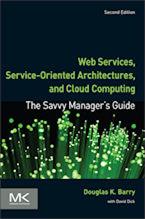Specifics on Mapping Objects to Tables
Mapping objects to tables involves creating or updating data stored in a relational database. This figure illustrates such a mapping. The details of mapping involve:

- Mapping objects to one or many tables. There are usually multiple ways to
map objects to tables. The issues include:
- Mapping inheritance issues. Is the inheritance structure mapped to multiple tables or is it mapped to one table with multiple type codes?
- Determining how many classes per table. Sometimes a given class might be stored as multiple tables or vice versa.
- Making decisions related to the potential for redundant data. Since object models do not need foreign keys or intersection entities, using them in a relational database, in a sense, is creating redundant data.
- Designing for multi-table updates. The prior issues often create the need for updating multiple tables.
- Mapping collection classes into tables. Decisions need to be made if a collection is mapped to one or more tables.
- Mapping object types to database data types. In most cases this is straightforward mapping.
- Mapping object relationships to keys or intersection tables. This is the many-to-many relationship issue that is represented in a relational database as an intersection table.
Context for Specifics on Mapping Objects to Tables
Related Articles for Specifics on Mapping Objects to Tables
Author
Douglas K Barry
Principal
You may use this material for your work or classes. Reprint Policy. Be sure to check the menu at the left for other articles available on this site.
The Savvy Manager's Guide
Douglas K Barry is also the author of a book that explains Web Services, service-oriented architecture, and Cloud Computing in an easy-to-understand, non-technical manner.
Web Services, Service-Oriented Architectures, and Cloud Computing: The Savvy Manager's Guide (Second Edition)
by Douglas K Barry with David Dick
This is a guide for the savvy manager who wants to capitalize on the wave of change that is occurring with Web Services, service-oriented architecture, and—more recently—Cloud Computing. The changes wrought by these technologies will require both a basic grasp of the technologies and an effective way to deal with how these changes will affect the people who build and use the systems in our organizations. This book covers both issues. Managers at all levels of all organizations must be aware of both the changes that we are now seeing and ways to deal with issues created by those changes.

